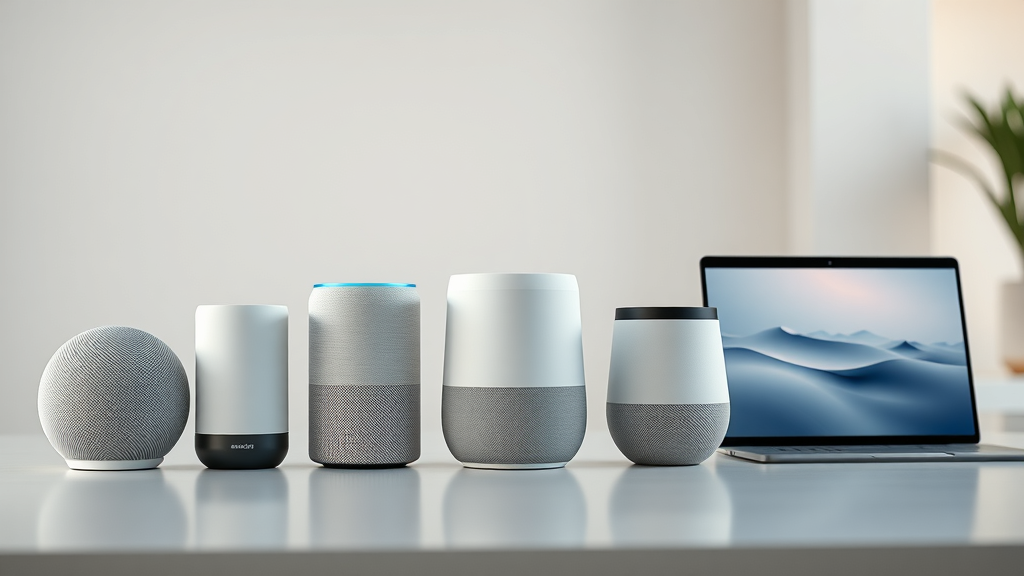Did you know over 42% of users feel daily frustration with AI voice assistants? If you’ve ever found yourself repeating commands or dealing with misunderstood requests, you’re not alone. This guide will help you uncover essential fixes, actionable tips, and expert insights to reclaim your smart home or office experience. Ready to transform daily annoyance into effortless productivity? Let’s dive into the data, solutions, and top features that can make your AI assistant truly work for you.
Why AI Voice Assistants Frustrate Users: The Surprising Data
AI voice assistants have rapidly become a fixture in both home and office environments, promising hands-free help and seamless integration across devices. Despite these benefits, a startling number of users—over 42%—report daily frustration. The main culprit? AI voice assistants often misunderstand or ignore user requests , creating communication barriers and disrupting workflow.
This gap between user expectations and actual performance of voice assistants highlights challenges with natural language processing, accent recognition, and smart home compatibility. The complexity of requests, from playing music or controlling home devices to handling project management tasks, can overwhelm even advanced AI voice solutions. As voice technology integrates deeper into smart homes and project management tools, these hiccups can affect productivity, leading to repetitive or failed interactions that leave users feeling ignored or misunderstood.
Understanding this data is crucial to improving your experience with AI personal assistants. Recognizing where these frustrations stem from allows users, developers, and businesses to implement focused fixes—turning a potentially cumbersome technology into a genuinely indispensable assistant.

- According to recent studies, over 42% of AI voice assistant users report daily frustration when their requests are misunderstood or ignored. This statistic highlights a clear gap between evolving AI voice technology and user expectations—and sets the stage for the actionable solutions below.
Unlocking the Power of AI Voice Assistants: Essential Fixes and Proven Tips
AI voice assistants are only as helpful as the setup, training, and integration they receive in your daily life. If you’ve been struggling with inconsistent responses, weak device integration, or limited feature sets, it’s time to implement some essential, proven fixes that will infinitely improve your AI assistant experience.
First, focus on quick troubleshooting steps —restarting your device, updating software, and double-checking language settings often solves common performance issues instantly. Next, make sure your AI assistant is set up to process natural language as accurately as possible. Training your assistant with personalized commands and phrases boosts its recognition accuracy, while updating security settings keeps your personal data safe.
Finally, consider the broader benefits: integrating your AI voice assistant more fully into your smart home ecosystem, connecting with productivity apps, and scheduling updates and reminders can take you from simple tasks to complete workflow automation . With these tips, your AI personal assistant becomes more proactive, accurate, and secure—empowering you in both work and play.
- Quick response troubleshooting for your AI voice assistant
- Optimal language processing for better accuracy
- Harnessing AI personal assistant capabilities in everyday life
- How to update and secure your AI voice assistant
- Integrating AI voice assistants into your smart home ecosystem

Boost Your Productivity with These 10 Proven AI Voice Assistant Fixes
1. Update Your AI Voice Assistant for Latest Features
Keeping your AI voice assistant current is crucial for optimal performance and access to new features. Regular software updates not only introduce improved AI voice capabilities and bug fixes, but also enhance compatibility with the latest smart home devices and productivity tools. Schedule automatic updates through your assistant’s app to stay ahead of major releases and security patches—ensuring a smoother and safer user experience.
Furthermore, updates often bring enhancements in natural language processing and support for additional languages. Missing these updates may mean your voice assistant lags behind in both understanding and execution, limiting your ability to use newer AI-powered integrations. Don’t miss out on generative AI advancements or expanded cross-platform digital assistant support—update routinely to unlock full potential.
2. Train Your AI Assistant with Personalized Commands
Personalization is key to unlocking true efficiency with your AI personal assistant. Training your AI assistant to recognize your voice, accent, and preferred phrases streamlines everyday communication. Most leading AI assistants, like Google Assistant, Amazon Alexa, and Apple’s Siri, allow users to add custom commands—making it easier to perform routine tasks or complex project management functions.
Consistently using personalized commands not only reduces misunderstandings, but also helps your AI assistant learn your daily patterns. Over time, your voice assistant will anticipate needs such as reminding you of meetings, controlling specific home devices, or initiating tailored routines. Investing a few minutes in initial training delivers long-term dividends in productivity and satisfaction.
3. Optimize Voice Recognition Settings
Fine-tuning the voice recognition settings of your AI voice assistant makes all the difference in accuracy and response speed. Start by calibrating the device in a quiet environment and providing samples of your voice. Many digital assistant platforms also let you adjust the sensitivity of their microphones or exclude background noise—an essential feature in busy households or shared offices.
Explore advanced options in your assistant’s app, such as adding multiple authorized users or specifying different wake words for distinct tasks. By optimizing these settings, your AI personal assistant becomes much better at filtering out false positives and focusing on your unique needs, regardless of environmental distractions.
4. Connect AI Voice Assistants to Your Smart Home Devices
A major advantage of using modern AI voice assistants is their ability to act as the control hub for your smart home. Make sure to link your assistant to compatible smart home devices—lights, thermostats, locks, and security cameras—to enable truly hands-free operation. Most platforms provide step-by-step setup wizards; take time to group devices by room, customize scenes, and set up automations based on your daily schedule.
Once integrated, you can adjust the ambiance, monitor security, and control appliances simply by speaking natural language commands. This connectivity not only adds convenience but also improves energy efficiency and enhances household safety with minimal effort.
5. Enable Natural Language Processing for Smoother Conversations
Natural language processing (NLP) is at the core of how modern AI voice assistants understand you. Enable the most advanced NLP features available on your device to transition from robotic commands to fluid, human-like conversations. This step is critical if you have a unique accent or prefer more conversational, less formal language when interacting with your digital assistant.
By leveraging improvements in NLP, your AI assistant can also handle follow-up questions, infer context, and process more complex instructions—improving overall satisfaction and reliability. Stay informed about evolving NLP features and experiment with different phrasing to find what works best for your needs.
6. Regularly Check for AI Personal Assistant Software Updates
Beyond system-wide updates, ensure that individual apps tied to your digital assistant—like calendar integrations, smart home controls, and third-party skills—are kept current. Many bugs and security vulnerabilities arise from outdated skills or integrations rather than the assistant itself. Make it a weekly habit to review your assistant’s connected services and apply updates as needed.
This ongoing maintenance guarantees compatibility with evolving AI technology and shields your home network or business data from avoidable vulnerabilities. Updated software regularly introduces support for new use cases and expands your assistant’s project management capabilities.

7. Leverage AI Voice Assistant Integrations with Productivity Apps
Amplify your personal and professional output by linking your AI assistant with apps like Trello, Google Calendar, Slack, or project management tools. These integrations enable you to add tasks, schedule meetings, send messages, or trigger workflows—all using your voice. The convenience of turning spoken instructions into actionable digital outcomes is a game-changer for anyone juggling complex tasks or multiple responsibilities.
Experiment with customizable workflows—as generative AI capabilities improve, you’ll find more opportunities for automated reporting, reminders, and even creative brainstorming. This approach is especially valuable for remote teams, entrepreneurs, and anyone looking to maximize the power of their digital assistant arsenal.
8. Enhance Privacy and Security Settings
Your AI voice assistant processes sensitive information every day, from calendar entries to voice recordings. Take control by reviewing and customizing privacy settings: delete stored voice data, anonymize usage logs, and restrict third-party access when possible. Industry leaders like Google Assistant, Alexa, and Siri provide dashboards for managing customer data —use these to maintain tight control over your digital footprint.
Set device passcodes and adjust permissions for skills and integrations on all home devices. For business users, consider deploying assistants with enterprise-grade encryption. Enhanced privacy settings safeguard your household and business operations, and build trust in the expanding artificial intelligence ecosystem.
9. Use Digital Assistant Features for Scheduling and Reminders
Digital assistants excel at organizing your workday and home routines. Utilize natural language reminders, appointment scheduling, and real-time notifications to stay on track—without manually typing or setting alarms. Most platforms allow recurring reminders, location-based prompts, and contextual alerts that adapt to your daily routine.
Leverage shared calendars for collaborative scheduling within families or teams, and delegate reminders for household chores or professional deadlines. The seamless scheduling and project management enabled by AI voice assistants can relieve cognitive load and sharpen your day-to-day focus.
10. Access Quality Customer Service for Persistent Issues
Persistent technical issues should never stand between you and a productive digital assistant experience. Leading brands offer robust customer support via in-app chat, forums, or dedicated hotlines—use these resources if your assistant repeatedly fails. Document specific errors, reproduce issues, and request escalation if initial troubleshooting steps do not deliver results.
Ongoing feedback from users like you also helps brands refine their offerings, so don’t hesitate to share constructive input on what works and what doesn’t. With attentive customer service, even the most stubborn AI voice assistant issues can be resolved in partnership with the experts behind the technology.
Key Features that Set Leading AI Voice Assistants Apart
The surge in popularity of AI voice assistants has illuminated several key features that distinguish top brands from their competitors. Natural language understanding sits at the heart of superior performance—allowing your assistant to comprehend, process, and execute commands with minimal error. This capability is further bolstered by generative AI, which powers more personalized, proactive responses across diverse use cases.
Other stand-out attributes include seamless smart home integration , cross-platform compatibility (e.g., working across iOS, Android, PC, and dedicated home devices), and high-fidelity voice recognition for individualized accuracy. These features collectively elevate your digital assistant from a basic tool to a proactive virtual assistant able to anticipate and address your unique needs.
- Natural language understanding
- Generative AI capabilities
- Smart home integration
- Cross-platform digital assistant support
- Superior voice recognition
| AI Voice Assistant | Natural Language Understanding | Generative AI Capabilities | Smart Home Integration | Cross-Platform Support | Voice Recognition |
|---|---|---|---|---|---|
| Google Assistant | Advanced | Emerging | Extensive | Android, iOS, Nest, PC | Highly Accurate |
| Alexa | Strong | Limited | Extensive | Alexa Devices, iOS, Android | Very Good |
| Siri | Solid | Limited | Moderate | Apple Devices | Good |
| Bixby | Improving | Limited | Strong Device Integration | Samsung Devices | Good |
| Cortana | Basic | Very Limited | Windows, Microsoft 365 | Moderate |

How AI Voice Assistants Are Evolving with Artificial Intelligence
AI voice assistants are in the midst of a significant transformation, propelled by the evolution of artificial intelligence , generative AI , and ever-improving natural language processing models. No longer limited to canned responses or basic actions, modern assistants are inching closer to serving as interactive, adaptive personal and digital assistants.
Breakthroughs in machine learning and deep learning algorithms empower these assistants to respond more intuitively and to anticipate needs based on usage history. The shift from reactive to proactive interactions—like suggesting calendar events, automating home routines, or providing personalized content—represents a leap forward for personal and business productivity.
Increasing Role of Generative AI in AI Voice Assistants
Generative AI is revolutionizing the way digital assistants engage with users by enabling sophisticated, context-aware conversation and content creation. These advancements mean that AI voice assistants can not only respond to direct queries, but proactively recommend solutions, summarize information, and even draft emails or notes using expansive language models .
By harnessing generative AI, today’s virtual assistants are capable of continuous learning, adapting to your speech patterns, and providing insightful suggestions that evolve alongside your preferences. This significant leap forward drastically reduces repetitive tasks and enhances the assistant’s ability to project manage and optimize workflows in real time.
"AI voice assistants are transitioning from reactive tools to proactive personal assistants, thanks to breakthroughs in generative AI and natural language processing."
Natural Language Processing and Improved Communication
The introduction of advanced natural language processing (NLP) has dramatically improved communication between humans and AI voice assistants. NLP now enables assistants to interpret context, manage follow-up requests, and understand complex dialogue—far beyond simple, one-step commands.
This evolution in language processing enhances accessibility and usability, closing the gap for users with regional accents or multilingual households. As NLP abilities expand, AI personal assistants become more intuitive, making smart home and office environments genuinely hands-free and deeply responsive.

Expanding Applications in Customer Service and Business Operations
AI voice assistants are reshaping the customer service landscape. Businesses are deploying advanced digital assistants to handle routine inquiries, triage support tickets, and schedule appointments—often with greater speed and accuracy than human agents. In industries like insurance, healthcare, and retail, this automation leads to substantial gains in efficiency and customer satisfaction.
Furthermore, AI-powered project management and workflow integration tools are enabling companies to automate repetitive business operations, enhancing response times and freeing human resources for more complex problem-solving. As virtual assistants become smarter and more deeply embedded in business ecosystems, their value as strategic assets continues to grow.
The Top 5 AI Voice Assistant Brands and Their Unique Strengths
The landscape of AI voice assistants is rich with variety, but five stand out for their unique focus and best-in-class features. Each caters to a specific audience and offers distinctive advantages, making the choice of virtual assistant highly dependent on your individual or business requirements.
- Google Assistant : Best for data accuracy and search integration
- Alexa : Unmatched smart home ecosystem compatibility
- Siri : Seamless integration across Apple devices
- Cortana : Productivity-focused for Windows users
- Bixby : Advanced device-based intelligence for Samsung products
Google Assistant’s robust integration with Android devices and Google’s index makes it unbeatable for search results and daily utility. Alexa’s enormous third-party ecosystem ensures compatibility with thousands of smart home devices—a boon for home automation enthusiasts. Siri’s unmatched synergy within the Apple ecosystem ensures continuity across Apple devices, while Cortana excels at enterprise productivity and project management for Windows users. Bixby goes deep on context-aware actions within Samsung's hardware.

"With the right setup, today’s AI personal assistants can be as efficient as a real-world secretary—minus the coffee breaks." – AI Industry Expert
Advanced Tips for Personalizing AI Voice Assistants
Personalization is at the heart of getting the most out of AI voice assistants. Customizing routines, wake words, and preferences transforms these digital assistants into indispensable productivity partners—suited perfectly to your household or business needs.
- Setting up routines with your AI personal assistant
- Using AI voice to automate daily workflows
- Customizing wake words and language preferences
- Creating integrated personal assistant tasks
- Data privacy controls for personal and business use
Establish morning and evening routines, set personalized alerts, and program your assistant to greet you or perform batch tasks with a single command. Explore language settings to ensure accurate recognition, particularly if you are multilingual or have a distinct accent. Don’t forget to review privacy settings periodically, especially if multiple users share the assistant or you handle sensitive customer data or business operations.

Getting the Most from AI Voice Assistants in Smart Home and Office
To fully leverage the potential of your AI voice assistant, focus on integrating it seamlessly in both your smart home and work environments. Establish voice-controlled zones in rooms or departments, automate lighting and climate control, and synchronize devices for effortless everyday management.
- Voice-controlled environments: Best practices
- Connecting digital assistants to security systems and IoT
- Business benefits: AI voice for customer service and appointment management
- Troubleshooting connectivity issues in smart home setups
The best practices for voice-controlled environments involve enabling access for trusted users, segmenting devices by zones, and employing routines that anticipate your daily schedule. Link your digital assistant to your home security system for voice-activated protection or integrate IoT sensors for automated responses. In business contexts, AI voice assistants streamline appointment scheduling, enhance customer support channels, and provide hands-free project management tools—minimizing administrative burdens.
| Device/Platform | Google Assistant | Alexa | Siri | Bixby | Cortana |
|---|---|---|---|---|---|
| Smart Lights | Yes | Yes | Yes (HomeKit) | Yes | Limited |
| Thermostat Control | Yes | Yes | HomeKit | Yes | No |
| Security Cameras | Yes | Yes | HomeKit | Samsung SmartThings | Limited |
| Door Locks | Yes | Yes | HomeKit | Yes | No |
| IoT Device Support | Extensive | Extensive | HomeKit-Only | Samsung Devices | Limited |

People Also Ask
What is the best AI voice assistant?
- The best AI voice assistant varies by use case: Google Assistant ranks highest for search accuracy and device compatibility, Alexa leads in smart home integration, and Siri excels within the Apple ecosystem. Consider your platform and feature needs when choosing.
Is there an AI assistant I can talk to?
- Absolutely. AI voice assistants like Google Assistant, Siri, and Alexa enable natural conversation for hands-free commands, information lookup, and smart device management.
What is the voice assistant in AI?
- A voice assistant in AI is a software agent powered by artificial intelligence designed to understand and respond to voice commands, providing information, managing tasks, and controlling smart devices.
Is there a free AI personal assistant?
- Yes—Google Assistant, Siri, and Alexa offer free voice-enabled personal assistant capabilities on most smartphones and smart devices, with advanced features available at no extra charge.
Expert Advice: Overcoming Common AI Voice Assistant Challenges
Even the best AI voice assistants encounter hurdles, like understanding regional accents or keeping your information private. To overcome accent recognition issues, spend time training the device’s language model and use the personalization options available in your assistant’s settings. For privacy, take full advantage of customer data management dashboards, and regularly review app permissions.
If your assistant is struggling with new skills or routines, engage with user communities, experiment with available APIs, and provide feedback to developers. Lastly, persistent malfunctions often respond to updates and reboots—but don’t hesitate to seek customer service for unresolved issues. Reliable troubleshooting and proactive learning will keep your AI assistant sharp and responsive.
- Addressing regional accent recognition difficulties
- Solving privacy concerns with AI voice assistants
- Tips for teaching your AI assistant new skills and routines
- Reliable troubleshooting for digital assistant malfunctions
Frequently Asked Questions on AI Voice Assistants
- How secure are AI voice assistants? AI voice assistants use end-to-end encryption for most communications, and reputable brands offer detailed privacy and usage controls. Always review device privacy settings and limit third-party app integrations for higher security.
- Can I use more than one AI voice assistant? Yes, many users pair multiple assistants—like using Alexa for smart home, and Siri for mobile device management—to leverage the unique strengths of each platform.
- Which AI voice assistant provides the best customer service? Google Assistant and Alexa both offer highly rated support with robust online resources and direct help lines. Quality may depend on device and region.
- What are the privacy implications of AI voice usage? Voice data may be stored on servers for analysis and improvement. Always opt out where possible, delete history, or anonymize usage data in device settings.
- How do I choose the right AI personal assistant for my needs? Evaluate factors like ecosystem compatibility, supported devices, language processing features, and privacy controls. Try different platforms to identify the best fit for your lifestyle or workflow.
Power Up Your Productivity: The Future of AI Voice Assistants
The future of AI voice assistants promises a productivity revolution—thanks to advances in predictive scheduling, generative AI, and adaptive workflow management. AI voice solutions are becoming not only more intelligent, but also more attuned to your habits and surroundings.
- Predictive scheduling and automated workflow management
- Integration of generative AI for creative assistance
- Constant learning and evolving voice recognition
"AI voice assistants are quickly becoming as essential as smartphones, with the promise to revolutionize personal and work productivity across all sectors."
Ready for Effortless Conversations? Take Action Today
- Imagine 24/7 AI voice support for your prospects— let’s talk. Book your free consult.
Take charge of your AI voice assistant experience by applying the proven fixes and personalization tips above. Empower your productivity and enjoy the future of conversational AI—starting today.
To enhance your understanding of AI voice assistants and their evolving capabilities, consider exploring the following resources:
-
“27 Popular AI Assistants to Know” : This article provides an overview of various AI assistants, detailing their features and functionalities, which can help you compare and choose the one that best fits your needs. ( builtin.com )
-
“The Best AI Personal Assistants in 2025” : This resource offers insights into the top AI personal assistants available in 2025, highlighting their strengths and potential applications to enhance productivity and daily tasks. ( cybernews.com )
If you’re serious about optimizing your interaction with AI voice assistants, these resources will provide valuable information to help you make informed decisions.
 Add Row
Add Row  Add
Add 




Write A Comment